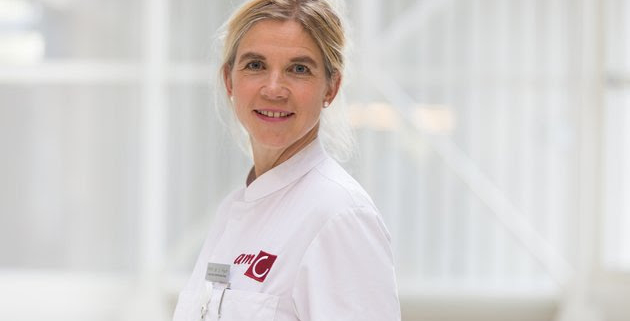A new heart from a 3D-printer
Passionate about her research on innovative heart valves, professor dr. Jolanda Kluin envisions the development of a soft artificial heart. Soft robotics brings this vision closer. “We can achieve progress through closer collaboration between physicians and engineers.”
The Hybrid Heart consortium envisions to develop and bring to the clinic soft biocompatible artificial organs. These will consist of a soft robotics shell with actuators (‘artificial muscles’) and sensors, enabling completely natural motion. The inner lining and structures will be made by in situtissue engineering (TE), ensuring biocompatibility of blood-contacting surfaces.
As the first step, the consortium will develop the Hybrid Heart, which can completely replace a patient’s heart in a procedure similar to a heart transplant, to provide a cure for heart failure, which affects ~23 million people worldwide. Currently, patients with end-stage heart failure either receive a heart transplant, if available, or long-term mechanical circulatory support, which causes severe complications. To achieve the ambitious goal of providing a permanent cure for these patients, the participants will, in parallel, develop the components of the Hybrid Heart: 1) a soft elastomeric robotics shell containing actuators and sensors, 2) scaffolds for in situTE of inner lining, valves and vessels and 3) a wireless energy transfer system. These components together will form the full Hybrid Heart, which will be soft, adaptable, wireless and fully bio- and hemocompatible. Both functionality as well as biocompatibility of the Hybrid Heart will be shown in a Proof-of-Principle study in the chronic sheep model at the end of the project.
The Hybrid Heart project will be carried out by an interdisciplinary group of (academic) researchers and high-tech SMEs, with experience in cardiac surgery, TE, soft robotics and engineering. The technology underlying the Hybrid Heart is applicable to a range of soft robotics-based artificial organs, including the bowel, lung, or muscle structures (limbs). Replacing an entire organ with bioinspired robotic elements, TE biocompatible surfaces, artificial sensors, and an external power source allows for an off-the-shelf therapy for patients with organ failure.
How did you got the idea of developing a soft artificial heart?
The idea a full hybrid artificial heart developed on a Saturday morning. After a long work week, professor dr. Jolanda Kluin, mother of 4, congenital cardiac surgeon and researcher, was enjoying a moment of relaxation on the couch when her husband, a professional nature-photographer, pointed-out a news-article in NRC Handelsblad, a Dutch newspaper. It contained an outline of a soft-, octopus-shaped like robot and brought Kluin to a visionary idea. In the previous years, Kluin studied biodegradable polymer heart valves that could slowly transforms into a living heart valve. By combining soft robotics with these polymer heart valves, it would be possible to develop a soft hybrid total artificial heart.
Do you need a multidisciplinary team to develop such a hybrid heart?
Yes, you need a lot of people with different expertise and background. Closer collaboration between physicians and engineers is of utmost importance to achieve progress. Via the inspiring octopus-robot picture in the newspaper, Kluin got connected to dr. Bas Overvelde, leader of the Soft Robotic Matter group at AMOLF Amsterdam. He was immediately excited when Kluin called him with her wild plan. ‘So far, we are particularly interested in very basic questions about Robotics’, says Overvelde. ‘Instead of the classic, hard robots we examine how we can make specific movements with soft materials such as rubber.’ After a meeting Kluin and Overvelde decided to write a proposal for a European FET (Future and Enabling Technologies) grant. They invited engineers form the soft robotics group in Pisa and engineers from the University of Technology Eindhoven to participate as well as engineers from Dualis, a German company that works on transcutaneous energy delivery.
Could you outline the socioeconomic impact of your research?
Heart failure is estimated to affect ~23 million patients worldwide. For patients with advanced heart failure, current treatment options include intravenous support with inotropic drugs requiring hospitalization, donor heart transplantation, and long-term mechanical circulatory support (implantation of left ventricular assist device (LVAD)). Heart transplantation currently remains the preferred therapy with annually ~2000 transplants in Europe. As donor organ availability is very limited, LVADs have now become a standard therapy, despite a high associated morbidity and mortality and poor quality of life. The main complications of LVADs are thrombosis and bleeding resulting in severe brain damage, and driveline infections. For paediatric patients, the situation is even more distressing to the lack of young donor hearts. Many heart failure patients stay on the intensive care unit desperately waiting for a donor heart, which will not reach most patients in time.
What are the requirements and constraints of combining technologies?
Combining soft robotics, TE and transcutaneous energy transfer leads to a new horizon in transplantation medicine that is not currently anticipated. As compared to other motile organs that have a secretory, digestive or cleaning function, the heart’s function is fairly uncomplicated in that it is ‘just a pump’. Moreover, this pump function is autoregulated and not dependent on brain-nerve-muscle interaction, such as with movement of limbs. As such, the development of a Hybrid Heart is an ambitious but achievable targeted breakthrough, and an important first and concrete step towards the project’s long-term vision.
For the subsequent development of other organs or tissues with more complex functions, the soft robotics, the TE and transcutaneous energy transfer components as developed for the Hybrid Heart will need adjusting. Recent advances in casting, moulding and 3D printing are expected to fuel development of more complex designs for such organs. The ongoing development of controllable soft bodies using materials that integrate sensors, actuators and computation, that together enable such a body to deliver the desired behaviour is of utmost importance for artificial limb development. Soft robots enable the development of biologically inspired artificial intelligence in ways that are not possible with rigid robots.
In addition, the synthetic materials used for in situ TE offer high control of scaffold design and manufacturing. This will be very important in developing organs with more complex functions like the kidney, liver, bowel or lung. The use of supramolecular materials, which can be easily modified, enables fine-tuning of the resorption rate, incorporation of bioactives in relation to the patient target group or incorporation of organoids, showing the full potential and benefit of the supramolecular material approach.
Apart from greatly advancing the state-of-the-art of the basic technologies building the Hybrid Heart, combining soft robotics, in situ TE and wireless energy transfer to attain Proof-of-Principle for an in vivo functional artificial soft actuated heart requires cutting-edge knowledge of how to integrate all components, such as the soft robotics elastomeric shell and actuators with the TE scaffolds. Combining soft robotics and TE in this project will render a new technology in itself, with many future applications inside and outside medicine.
Materials experts at all partners will develop the components of the Hybrid Heart in parallel, collaborating to ensure compatibility already during the design process.




